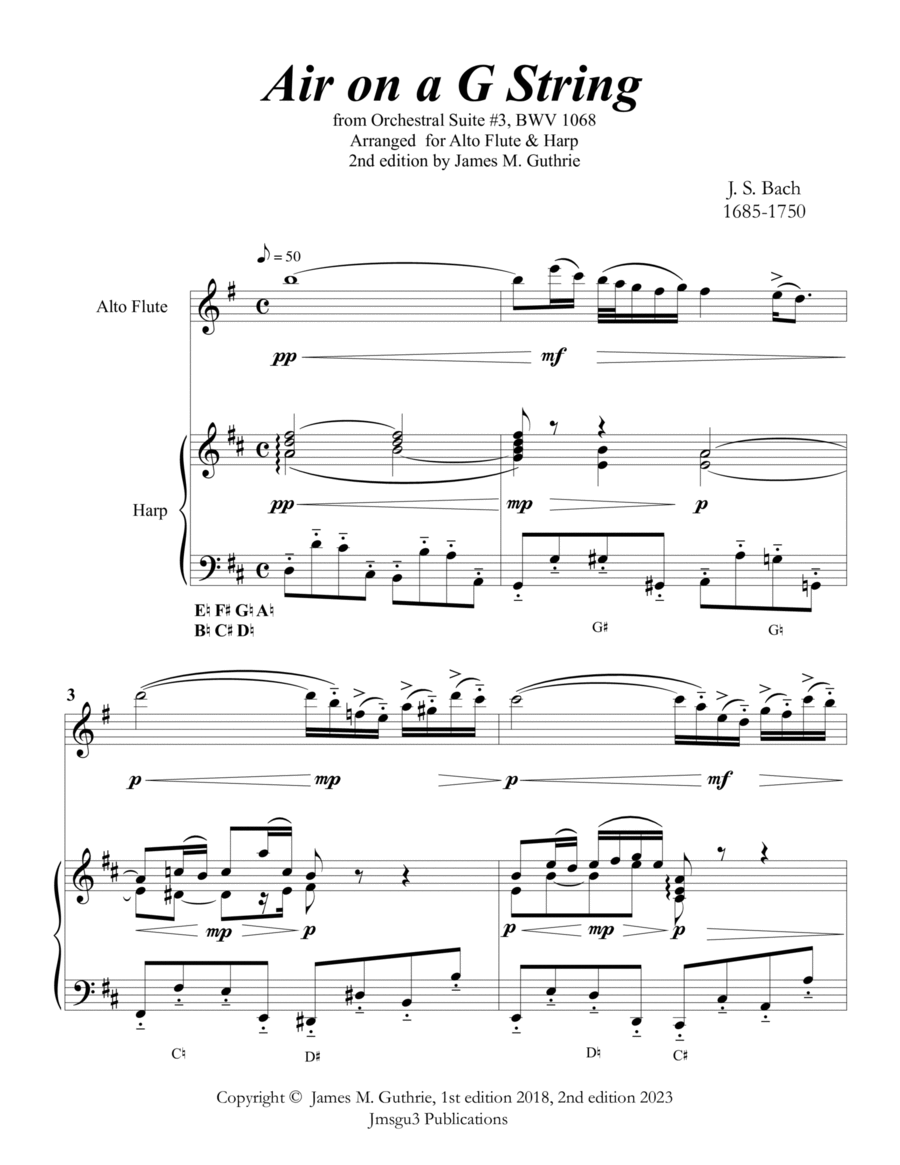Alto Flute,Harp,Instrumental Duet - Level 2 - Digital Download SKU: A0.1277140 Composed by Johann Sebastian Bach. Arranged by James M. Guthrie. Baroque,Chamber,Contest,Festival,Historic,Wedding. 8 pages. Jmsgu3 #868828. Published by jmsgu3 (A0.1277140). Air on a G String is the popular nickname for the Air from Orchestral Suite #3 in D Major, BWV 1068 by J. S. Bach. Duration: 5:53 (taking both repeats). Level: Intermediate and up. Programming: Great choice for recitals and useful for almost any church service, reception, wedding, or event where insightful meditation is desired. This music is well known and admired by nearly everyone, so you will have an advantage in providing something familiar and well-cherished for your audience. This is the piece to demonstrate dynamic control, tone quality, and strategic phrasing of long melodic lines.Bach: Air on a G String - ~ Bach composed three noteworthy Orchestral Suites. He wrote his third orchestral suite, BWV 1068 in D, for his Collegium Musicum. The Overture of the suite features a double-dotted rhythm in the French style and employs the entire ensemble: trumpet trio, timpani, oboe duet, and strings. The strings were the typical 2 violin parts, viola part, and continuo of cello and harpsichord. Air - the title of the second movement, is, by contrast, scored only for the strings. It seems like this work was entitled Air on a G String not by Bach, but by a nineteenth-century violinist named August Wilhelmj. He arranged the Air such that the first violin part was performed by a single soloist – and entirely on the G String.
